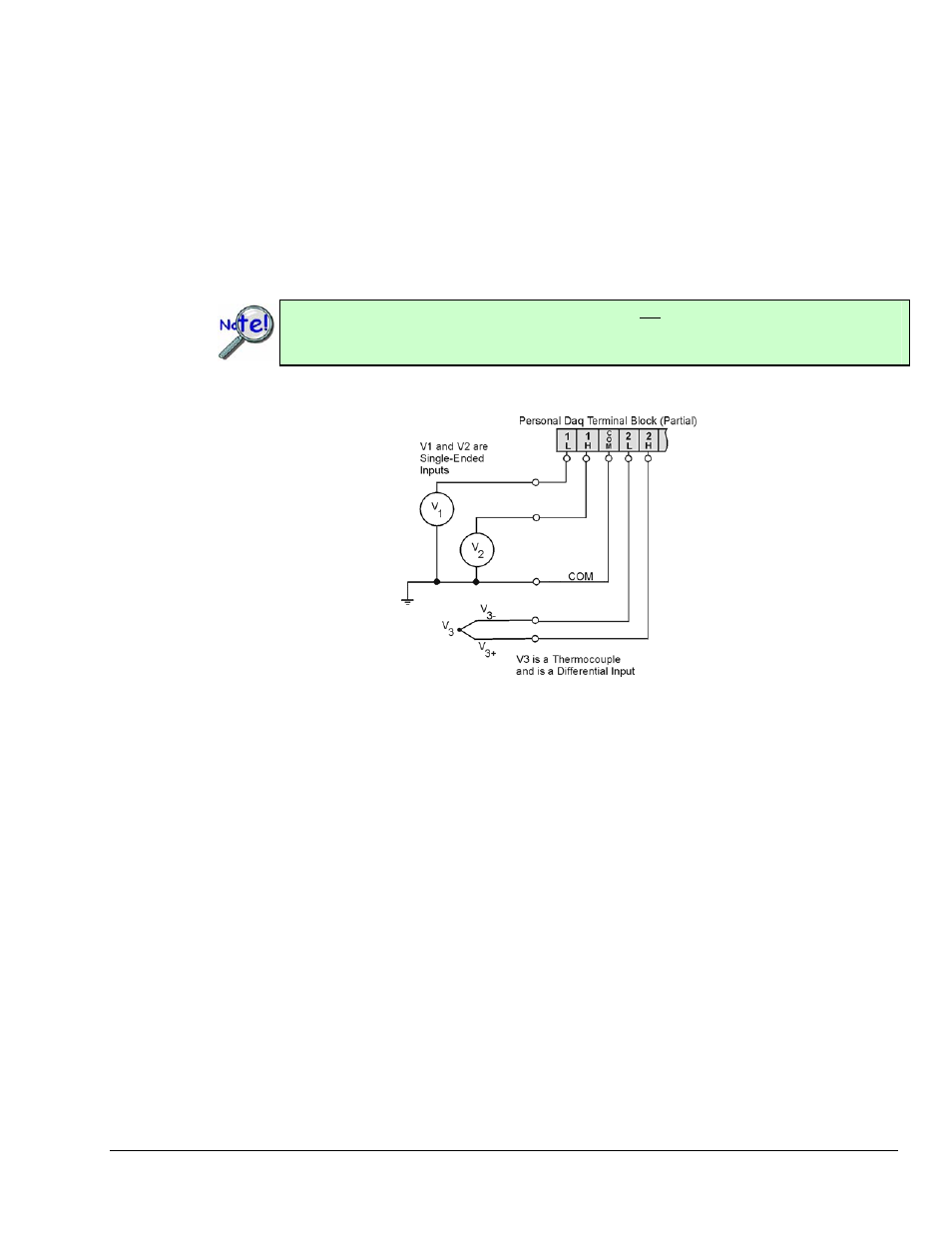Analog input configuration, Measurement duration, sample rate, and resolution – Measurement Computing Personal Daq rev.6.0 User Manual
Page 25

Personal Daq User’s Manual
878595
General Information & Specifications 2-5
Analog Input Configuration
Personal Daq/54 and Personal Daq/55 each include 10 analog signal inputs which may be used as 10
single-ended inputs, 5 differential inputs, or as a combination of single-ended and differential inputs with
up to 10 connections. Personal Daq/56 includes 20 analog signal inputs which may be used as 20 single-
ended inputs, 10 differential inputs, or as a combination of single-ended and differential inputs with up to
20 connections.
Single-ended inputs are used with signals that share the same common low (COM), such as multiple
batteries which have their negative sides connected in common. Differential inputs are required when
signals do not share the same common low, such as in the typical use of thermocouples. A simple
example showing two single-ended inputs (V1 and V2) and a differential input (V3) follows.
In Personal Daq applications, thermocouples should not be connected single-ended. Doing
so can result in noise and false readings. This is especially true when acquiring other high-
amplitude signals in conjunction with thermocouple signals that are connected single-ended.
Single-Ended and Differential Connections to Analog Input Channels
For Personal Daq/55 and Personal Daq/56, the number of analog input channels can be expanded with
use of a PDQ expansion module. There are two types of PDQ expansion modules, either type can be
snapped on to a Personal Daq unit; however, each Personal Daq can support only one expansion module.
PDQ1 modules add 20 single-ended (or 10 differential) inputs to the Personal Daq/55 or /56.
PDQ2 modules add 40 single-ended (or 20 differential) inputs to the Personal Daq/55 or /56.
Measurement Duration, Sample Rate, and Resolution
In relation to sampling analog input, the terms measurement duration, sample rate, and resolution have the
following meanings:
Measurement duration (per channel) – the amount of time used for sampling a channel’s input signal.
You can independently set the measurement duration for each channel. The measurement durations for
Personal Daq’s analog channels range from very slow (610 milliseconds for one sample) to very fast
(12.5 milliseconds for one sample).
Sample rate – Samples per second. The sample rate is the number of samples that take place per second.
With the very slow measurement duration of 610 milliseconds, there will only be 1.6 samples per second.
With the very fast measurement duration of 12.5 milliseconds, there will be 80 samples per second.
Resolution (Bit RMS) – The number of reliable data bits that exist for a signal’s measurement. The greater
the resolution, the more detailed the reading, for example, with increased resolution a reading of 5.12 V
could become 5.11896 V. Personal Daq actually provides for 24 bits of data information; however, the
accuracy of the least significant bits becomes less as the measurement duration speeds up.